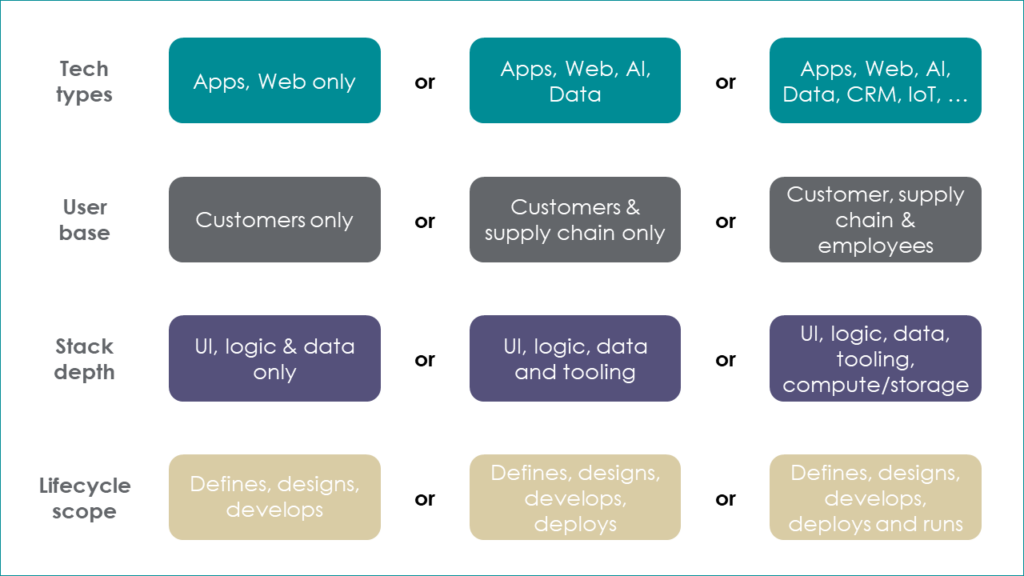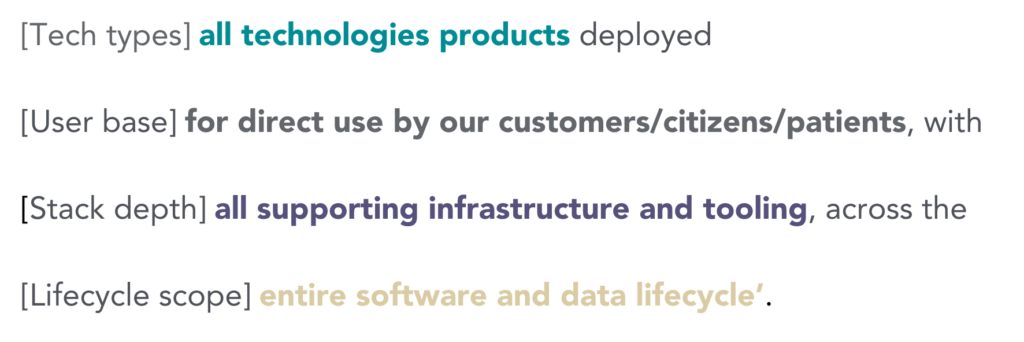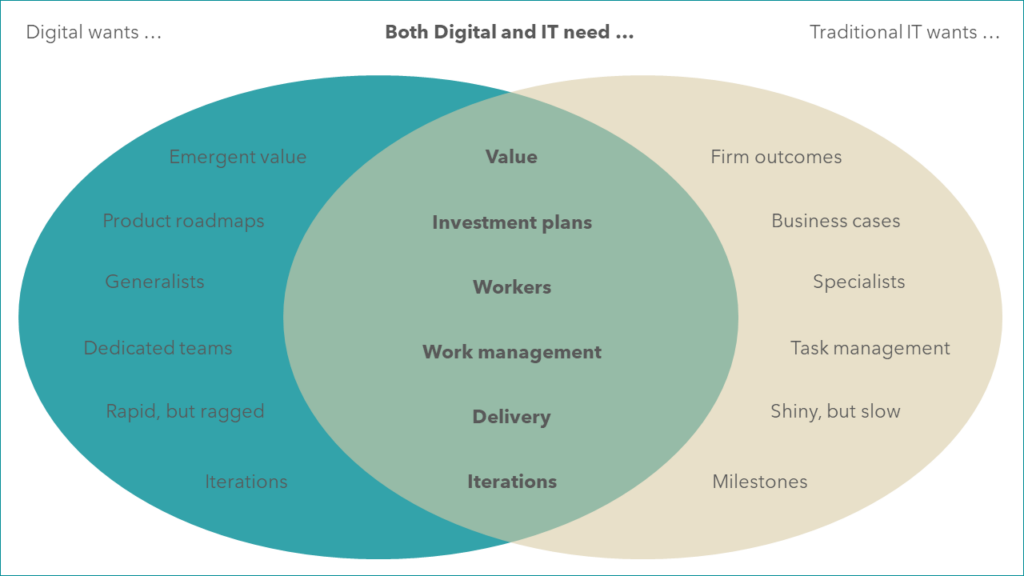Rewriting the rules for Digital

key fact
Digital technologies demand that IT operates at a different speed and with a different mindset. (source: Jeanne W. Ross)
Digital teams often struggle to define their scope and establish effective rules of engagement. However, taking these steps early can prevent regrettable compromises and accelerate digital success.
It was once pretty common for IT functions to drive digital, with leaders treating it the same way as a major IT programme – subject to project management and PMO controls.
Luckily, most digital teams have evolved from that position, discovering that success means breaking-away from IT process norms. This sounds a little like abandoning discipline, but done well it’s quite the opposite.
To forge your own path for digital, cleanly, and respectfully, it’s important to do three things early on:
- define ’Digital’ for your organisation,
- purposefully rewrite its rules, and
- harmonise without compromise.
Let’s zoom-in on those steps …
Define
Building boundaries for ‘Digital’ creates a territory within which IT management rules need not apply. It gives digital the freedom to work optimally towards necessarily amorphous outcomes, while simultaneously leaving IT to continue tightening and maturing more traditionally, unless or until parts of it are ready to follow suit.
A good working definition considers several dimensions, as shown in the table below. Some are likely to work better than others (especially those with the clearest boundaries) but there’s no one ‘right’ definition, instead it must be organisation-specific, to avoid organ-rejection. Digital heads should make sure that the definition is carefully crafted, supported by the CEO’s team, and shared widely.
Figure 1 – Dimensions for a definition of ‘Digital’
For example, you might use the table above to create a broad definition such as:
Digital is name we give to
With your definition firmly in-place, you can safely switch your attention to the rules.
Rewrite
Why is breaking with IT management conventions so important in digital?
Actually, in small start-up it may not be. You may already have a healthy digital ethos, just needing a little structure and focus for it to flourish fully.
But in larger enterprises, established technology management usually runs counter to digital success. Falling-in with it means failing, because traditional project and service structures prove too rigid and technology-focused to yield the rapid, customer-focused outcomes that will be expected.
So, here’s a sample of ten IT rules that are almost always worth breaking in more established organisations, without embarrassment or regret:
- Keep the needs broad, avoiding specific ‘requirements’ because users want value ahead of technical specs.
- Instead of making a business case for each project, seek steady funding streams from the CFO, without tight commitment to outcomes
- Design with developers, to validate the feasibility of ideas, and prototype early
- Prefer a small, keen, dedicated, multi-skilled team to tasking an array of experts
- Allow the team to self-manage as far as possible, with competent individuals even selecting their own tasks, and starting work without the requisite skills
- Resist blindly outsourcing or offshoring, recognising that they could well push cost-per-outcome up, not down
- Proudly show a sample of customers your half-finished work, so they get the right thing quicker
- Expect to go wrong often, and plan for it – not with contingency, but with continuous planned adjustment to what happens next
- Abandon the use of projects, programmes and project offices in digital, relying instead on product teams to prioritise and self-measure
- End every increment of work on time, regardless of what was completed.
If your eyebrows are raised, please do lower them. Many of the points above might sound avant–garde – and in isolation, they usually would be – but as a set they almost always work extremely well, actually bringing more discipline.
Figure 2 – Same aims; different approaches
Harmonise
Having rewritten the rules, it’s important to harmonise them with the rest of the organisation. Digital doesn’t stand alone.
Co-ordinating with IT is especially important, given that some overlaps and dependencies are inevitable (however hard you work to limit them). If your IT team are already experimenting with agile methods, then co-operation should be much easier. But if not, there are still plenty of proven ways to have digital and IT play nicely.
We’ve seen these problems time and again, and found a range of solutions, so please don’t hesitate to contact us for help or advice.
If you would like to speak to Jeremy further regarding this insight, send your enquiry to contact@masonadvisory.com.
If you want to find out more about our services, click here.


